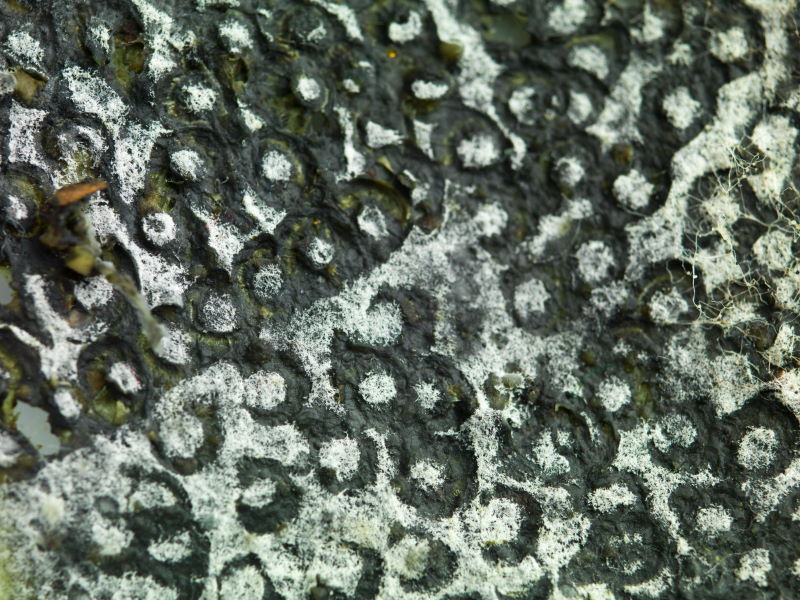Today we’re talking about a house that was built about 20 years ago. behind one wall we had a little bit of growth. We’re not sure what it was. Some black stuff growing on the paper, facing the dry wall. You could actually see just a little bit of it right on the base of the wall. It’s kind of a blackish stuff. Again, we don’t know what that is. It may be mold. It may not be, but we know how to solve it.
Mold Needs Three Things To Grow
Here’s the deal. Anytime you see mold growth in a house, mold needs three things to grow. It needs a temperature, It needs a food source and it needs a water source. Our houses are full of food sources. The more broken down the cellulose is, which is a great food source, the more mold is going to like it and grow on it. The facing that’s paper on your drywall is a great spot to grow mold. You’re going to see more mold growth on the paper of the drywall than you would on a 2×4. More mold growth is going to happen on OSB than plywood. The more broken down the wood, the more the mold likes it. Number two, we need a temperature. Mold likes an elevated temperature. Typically the temperatures that we like or the temperatures mold likes as well. At 70 degrees and above, you’re going to have more mold growth. The hotter it gets, the more active it’s going to be.
While we can’t do much about the food and temperature, water source is the biggest factor we can control as a builder or as a homeowner. Number one, we want to make sure we don’t have any bad water leaks. We want to make sure our windows are not leaking. We want to make sure our houses don’t have roof leaks, or lots of condensation. All those things can lead to mold growth. We didn’t have that issue with this house. What we had here is an elevated humidity level. We’re in this basement waterproofing company space. The walls are fully underground and we’ve had a really wet couple months. Likely the concrete walls and floor are going to be fairly wet.
Bring The Humidity Down
Some of that moisture is migrating into the space and it’s not getting relieved by the HVAC system. I saw a humidity in this room of about 70%. Anytime we get above 60% in our houses, that’s when mold’s going to have be more likely to grow. And the higher we get to 80% or above, it’s really going to be active. Now we put a dehumidifier in the room a couple of weeks ago, it’s been pulling water out of the space and now we’ve been able to get the humidity down to 41%. We’re not going to have any activity at 41%. This situation has been totally taken care of. However, the house has a couple of other areas that are issues that may be contributing towards this mold problem. The next place we need to check is the attic upstairs.
This attic had some problems as well that were exacerbating the issue down in the basement. Number one, air leakiness. When I opened these attic stairs, I noticed right away, there was an uninsulated staircase. It would be as if we left our front door open on our house and expected our HVAC system to catch up. This is a terrible system in so many houses and needs to be insulated. It needs to be weather stripped and air sealed.
An Uninsulated Attic Causes Issues
The next thing I noticed was there were several areas in this attic that were either uninsulated or we can see directly into the house. We’ve got a bunch of air sealing that needs to happen up there. And why does this need to happen? What happens when we’ve got an un air conditioned attic like this with duct work running through? In the summertime, this attic’s going to be 130 degrees. We’ve got air conditioned air inside this duct work at 55 degrees, and there’s going to be some small cracks and holes in the duct work. All duct work has some amount of leakage. When this duck turns on and blows air through it, that air leaks out. It depressurizes the house.
And now the house is sucking air, basically wherever it can. That air is getting sucked right through the staircase. Now, when the air leaks out there, we’re suck in 130 degree air, right through the staircase area. That’s adding to the humidity load for the space. It’s adding to the heat load. It’s terribly inefficient and terribly uncomfortable, and probably is going to add to that high humidity issue. Humidity, is of course was the problem in the basement.
Energy Efficiency Is Key
We’ve made sure that our envelope is as airtight as possible. We’ve conditioned and filtered the air. We’re going to take care of that microbial growth, but we’ve also increased greatly our comfort in this house. And then we’re going to make a big impact on the energy efficiency here, too.
If you’re building new, the takeaway for you is bring those ducks into your condition space. That way you won’t have a lot of these problems to begin with. Also, do the best job of air sealing you can while it’s under construction. Air sealing your house is much harder to do after the fact. If you’re reading this and you’ve got an old house like this, there’s houses like this all over Washington State, you might consider adding separate dehumidification.

